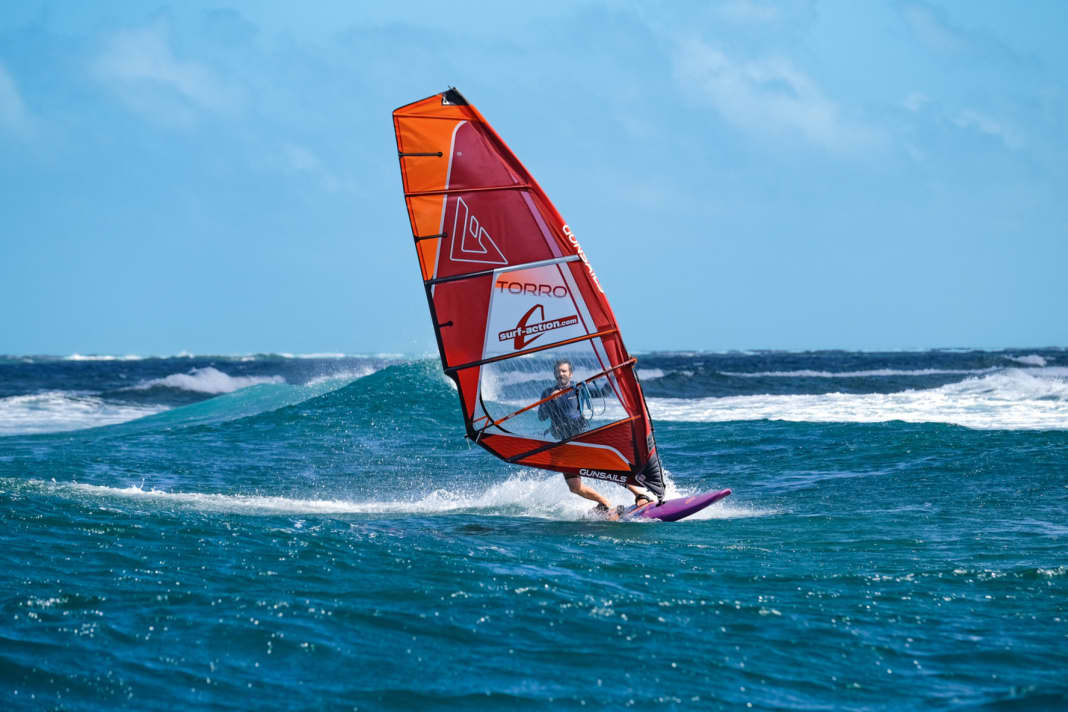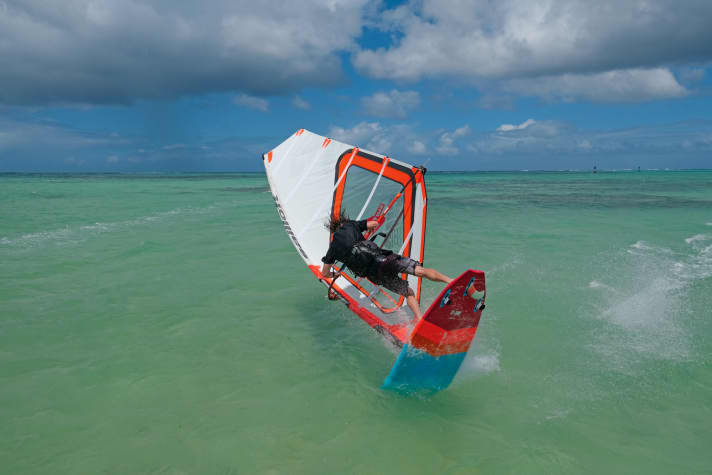





A typical freemoving sail is a bit of everything - it should start planing early, be easy to control, lie lightly in the hand during manoeuvres and, if necessary, be able to take a freestyle move or a trip into the mini surf.
To ensure that the sails in this group can fulfil the requirements, the designers have positioned these concepts between wave and freeride models. The bottom line is that freemoving sails have slightly longer booms and a higher profile than wave sails - which makes them easier to plan and glide through. In some cases, the extensive reinforcements that are obligatory for wave sails have been dispensed with, which means that freemove models are usually even slightly cheaper than their wave counterparts.

Compared to freeride sails, the freemove concepts usually offer slightly less planing power, but their more compact boom dimensions give them an advantage in manoeuvres and rotations.
We tested seven models for you. The sails were allowed to enjoy the Caribbean waters of Tobago before being brought back down to earth a few weeks later on the fresh North Sea and Baltic Sea.
You can read about how the individual sail concepts were designed and whether they are better suited to freeride boards with single fins, fresstyle wave boards or even boards for the waves in surf 6/2023 - in stores from 17 May!
